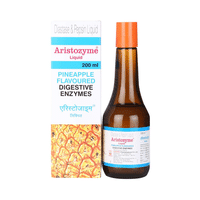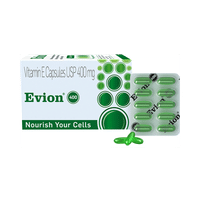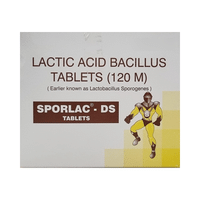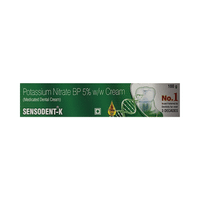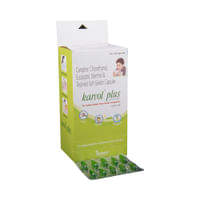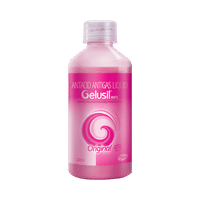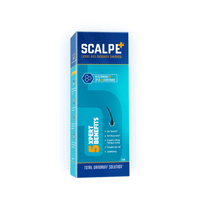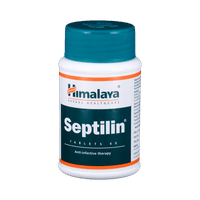Beclocin O Ear Drop
Composition FOR Beclocin O
Lidocaine(2% w/v),Beclometasone(0.025% w/v),Clotrimazole(1% w/v),Chloramphenicol(5% w/v)food interaction for Beclocin O
alcohol interaction for Beclocin O
pregnancy interaction for Beclocin O
lactation interaction for Beclocin O
food
alcohol
pregnancy
lactation
No interaction found/established
No interaction found/established
Information regarding the use of Beclocin O Ear Drop during pregnancy is not available. Please consult your doctor.
CONSULT YOUR DOCTOR
Information regarding the use of Beclocin O Ear Drop during breastfeeding is not available. Please consult your doctor.
CONSULT YOUR DOCTOR
SALT INFORMATION FOR Beclocin O
Lidocaine(2% w/v)
Uses
Lidocaine is used for local anesthesia.
How it works
Lidocaine is a local anesthetic. It works by blocking the transmission of pain signals from the nerves to the brain. This helps to decrease the sensation of pain.
Common side effects
Allergic reaction, Application site reactions (burning, irritation, itching and redness)
Beclometasone(0.025% w/v)
Uses
Beclometasone is used in the treatment of asthma.
How it works
Beclometasone is a steroid which works by blocking the production of certain chemical messengers in the body that cause inflammation (redness and swelling) and allergies.
Common side effects
Hoarseness of voice, Headache, Breathlessness, Nausea, Itching, Erythema (skin redness), Thrush, Pharyngitis, Abnormal taste, Nasopharyngeal irritation, Application site irritation, Application site burning, Rash, Urticaria, Vertigo, Blurred vision, Angioedema (swelling of deeper layers of skin), Allergic reaction, Paradoxical bronchospasm, Cushing syndrome, Anxiety, Hyperactivity, Nasal ulceration
Clotrimazole(1% w/v)
Uses
Clotrimazole is used in the treatment of fungal infections.
How it works
Clotrimazole is an antifungal medication. It kills and stops the growth of the fungi by destroying its cell membrane, thereby treating your skin infection.
Common side effects
Blisters, Erythema (skin redness), Vaginal discharge, Genital peeling, Burning sensation of the penis (of sexual partner), Stinging sensation, Edema (swelling), Vaginal burning sensation, Skin irritation, Allergic reaction, Polyuria, Vaginal itching, Vaginal bleeding, Pain in vagina, Vaginal swelling
Chloramphenicol(5% w/v)
Uses
Chloramphenicol is used in the treatment of bacterial infections. It is used to treat certain types of serious infections caused by bacteria when other antibiotics cannot be used.
How it works
Chloramphenicol is an antibiotic which stops the growth of bacteria. It does so by preventing synthesis of essential proteins required by bacteria to carry out vital functions. This does not directly kill the bacteria, but prevents them from increasing in numbers, and eventually clears up the infection.
Common side effects
Vomiting, Nausea, Diarrhea, Glossitis (tongue inflammation), Hypersensitivity, Bone marrow depression, Aplastic anemia, Increased bleeding time, Optic neuritis, Ototoxicity, Acidotic cardiovascular collapse, Stomatitis (Inflammation of the mouth), Enterocolitis, Gray baby syndrome, Application site reactions (burning, irritation, itching and redness), Blood dyscrasias, Headache, Depression, Delirium (acute confusional state), Jarisch-Herxheimer reaction, Superinfection
SUBSTITUTES FOR Beclocin O
47 Substitutes
47 Substitutes
Sorted By
 Rs. 50pay 203% more per ml of Ear Drop
Rs. 50pay 203% more per ml of Ear Drop Rs. 77.50pay 369% more per ml of Ear Drop
Rs. 77.50pay 369% more per ml of Ear Drop Rs. 43.56pay 164% more per ml of Ear Drop
Rs. 43.56pay 164% more per ml of Ear Drop Rs. 69pay 318% more per ml of Ear Drop
Rs. 69pay 318% more per ml of Ear Drop Rs. 96pay 482% more per ml of Ear Drop
Rs. 96pay 482% more per ml of Ear Drop
Expert advice FOR Beclocin O
- Lidocaine is prescribed to relieve itching and pain caused by scrapes, burns, rashes, bites and eczema.
- Apply it over the affected area with a clean fingertip, three to four times a day or as directed by your doctor.
- Do not apply it to broken or infected areas of skin, face, eyes or eyelids unless instructed to by your doctor.
- Do not cover the area being treated with airtight dressings such as bandages unless directed by a doctor, as this may increase the risk of side effects.
- Avoid contact with eyes, mouth, and nose. In case of accidental contact, rinse thoroughly with water.
- Consult your doctor if your skin condition has not improved after 2-4 weeks of treatment.
- Inform your doctor if you are pregnant, planning pregnancy or breastfeeding.
Frequently asked questions FOR Beclocin O
Lidocaine
Q. What is Lidocaine used for?
This medication is usually applied by a healthcare professional to the area being treated or to the medical equipment as part of a medical procedure. It helps to numb the area and reduces the discomfort associated with the insertion of medical instruments such as needles or catheters. It also helps to reduce the pain and inflammation in conditions such as heamorrhoids (piles) and anal fissures.
Q. Is Lidocaine toxic?
If Lidocaine is used under the supervision of a doctor or as directed by your doctor, it is generally safe to use. However, using more than what is recommended may lead to a number of serious health issues such as numbness of mouth and throat if swallowed. This can lead to difficulty swallowing and even choking.
Q. How long does it take for Lidocaine to work?
Lidocaine is applied at the start of a medical procedure and takes 3-5 minutes for the numbing effect to occur.
Beclometasone
Q. What is thrush? Can Beclometasone cause thrush?
Thrush is a fungal infection of the nose and throat caused by candida. Beclometasone can cause thrush as a common side effect. To avoid getting fungal infections, you should thoroughly rinse your mouth after using a nasal spray. If you experience any redness or white colored patches in your nose or mouth, inform your doctor.
Q. How does Beclometasone work?
Beclometasone is a corticosteroid, which works by decreasing the inflammation caused by allergies. It reduces inflammation by blocking the release of certain natural substances that cause allergic symptoms such as swelling, redness and pain.
Q. How long does Beclometasone take to start working?
The time required by Beclometasone to start showing its effects may differ from person to person. Usually, it starts showing relief within 8 hours of starting Beclometasone. It may even take several days before you see maximum benefits. In order to improve your symptoms faster, it is important to take the medicine regularly as it increases efficiency of the medicine.
Clotrimazole
Q. What is Clotrimazole used for?
Clotrimazole is an antifungal medicine. It is used to treat fungal skin infections such as ringworm (fungal skin infection that causes a red scaly rash on different parts of the body), athlete’s foot (fungal infection of the skin on the feet and between the toes), fungal nappy rash and fungal sweat rash. It is also used to relieve irritation of the vulva (external thrush) and irritation occurring at the end of the penis, which may be associated with thrush.
Q. Clotrimazole is effective against which fungi?
Clotrimazole is effective against Trichophyton species which cause ringworm infection, athlete’s foot, and jock itch (fungal infection of the skin in the groin or buttocks). It is also effective against yeast known as Candida which commonly causes vaginal thrush (infection caused by an overgrowth of yeast called Candida albicans).
Q. I have started using Clotrimazole. By when can I expect to start seeing the improvements?
The symptoms of skin infection, such as itching or soreness, should improve within a few days of treatment. However, the signs such as redness and scaling may take longer to disappear. Do not stop applying this medicine before the duration advised by your doctor, even if you feel better.
Chloramphenicol
Q. How long does Chloramphenicol takes to work?
Usually, Chloramphenicol starts working soon after taking it. However, it may take some days to kill all the harmful bacteria and make you feel better.
Q. What if I don't get better after using Chloramphenicol?
Inform your doctor if you don't feel better after finishing the full course of treatment. Also, inform him if your symptoms are getting worse while using this medicine.
Q. Can I stop taking Chloramphenicol when my symptoms are relieved?
No, do not stop taking Chloramphenicol and complete the full course of treatment even if you feel better. Your symptoms may improve before the infection is completely cured.













